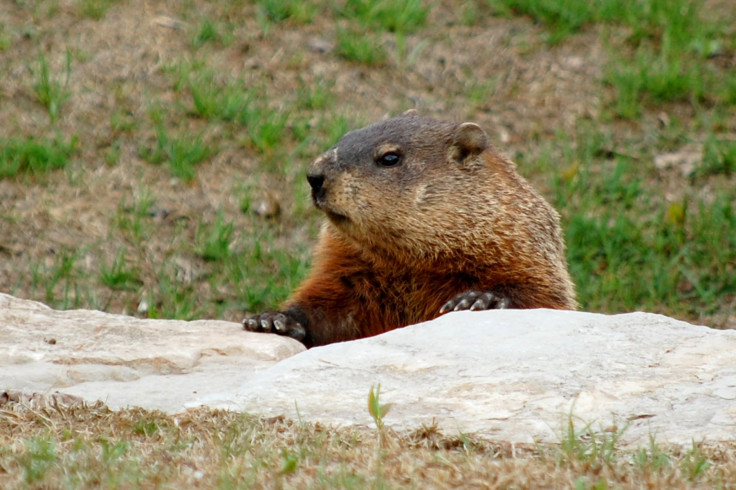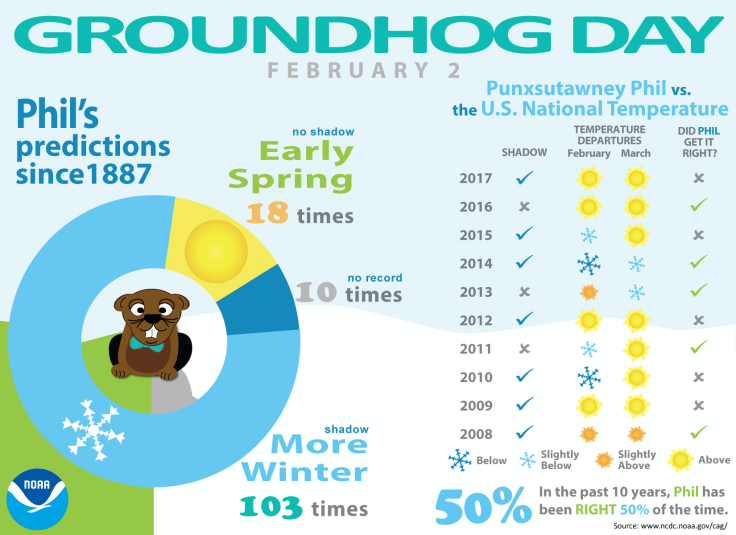How Accurate Is The Groundhog's Prediction? What Did He See?

Every year, rain or shine, the groundhog known as Punxsutawney Phil is pulled from his cozy home to make a prediction. Thousands look on and wait in the cold for the verdict, six more weeks of winter or an early spring?
But when it comes down to it, over the last 10 years Phil has only been about as accurate as flipping a coin would be, according to data from the National Oceanic and Atmospheric Administration. Last year, for instance, he saw his shadow and predict six more weeks of winter but the lower 48 states then saw temperatures that were warmer than average during the months of February and March, said NOAA.

Besides the fact that Phil is just a groundhog and really has no knowledge of the climate in the United States, his predictions can also be off due to the fact that the United States has regionally diverse climates can greatly vary by location. There are some years during which Phil’s predictions are correct for some regions but wrong for several others.
Phil has been looking for his shadow since 1887 when a newspaper editor declared a groundhog the forecasting groundhog for the entire country. It was originally meant to celebrate the point that falls halfway between winter solstice and the spring equinox.
NOAA determined that the data collected and recorded based on weather and Phil's predictions show, “No predictive skill for the groundhog during the most recent years of this analysis.”
Friday morning, Punxsutawney Phil did see his shadow, traditionally meaning that there would be six more weeks of winter if he’s correct.
Phil is generally accepted as the national forecaster, but other groundhogs around the country also make predictions. For example, Staten Island Chuck predicted an early spring, Sir Walter Wally in Raleigh also predicted an early spring, while Jimmy of Sun Prairie in Wisconsin agreed with Phil that there would be six more weeks of winter.
© Copyright IBTimes 2025. All rights reserved.




















